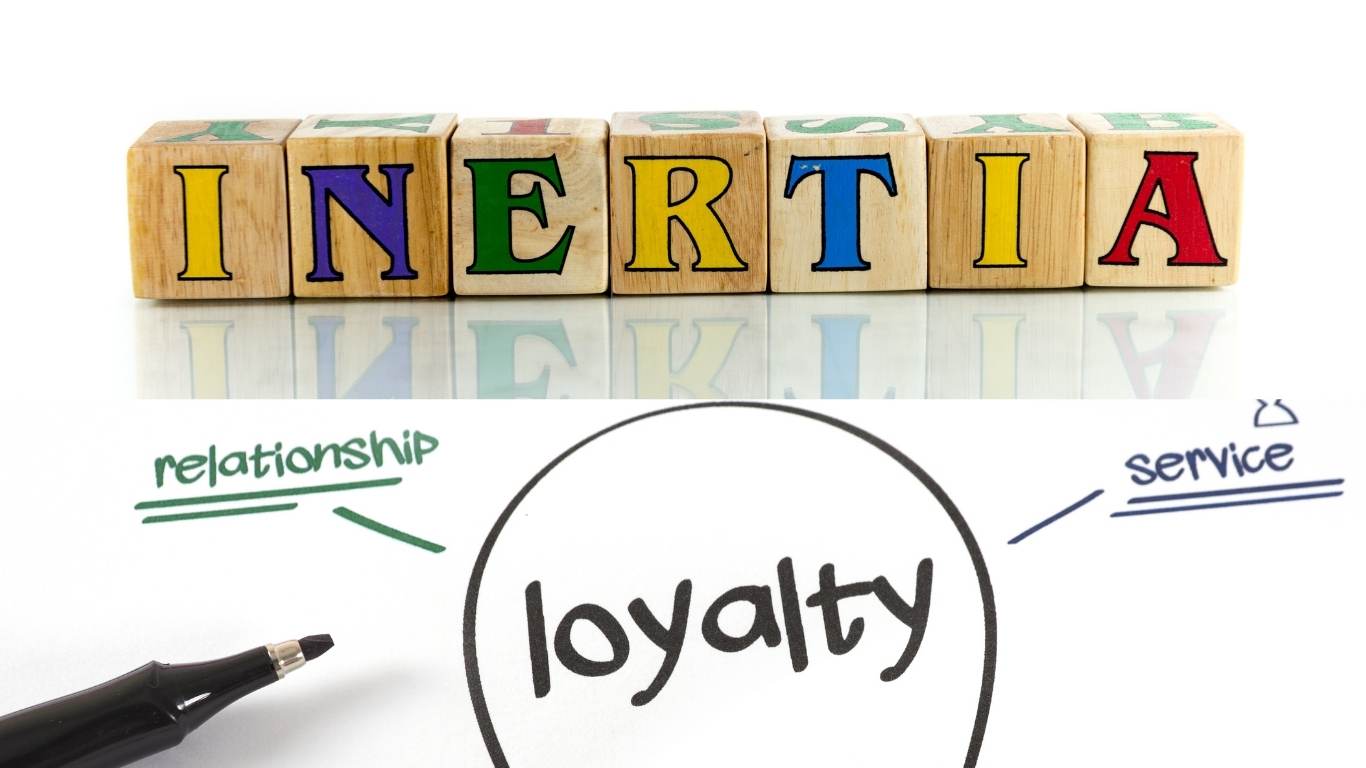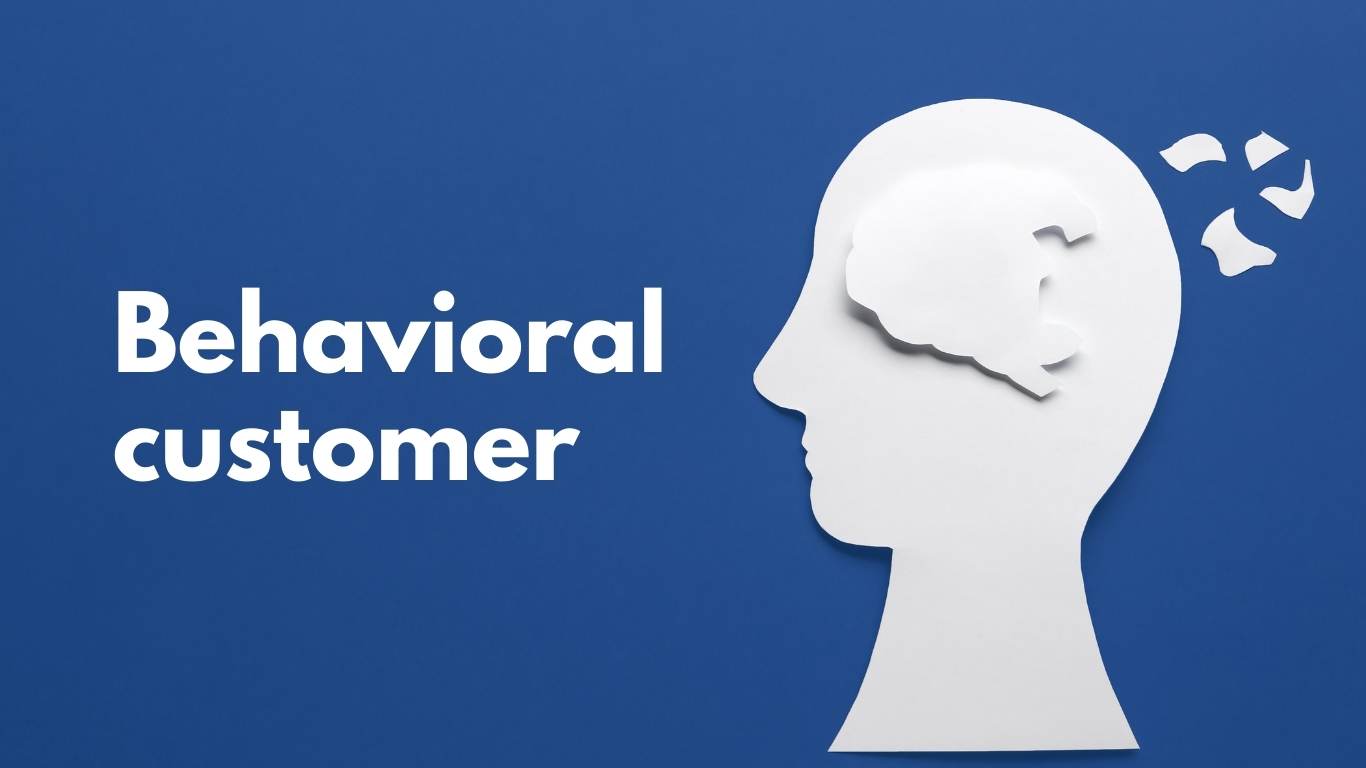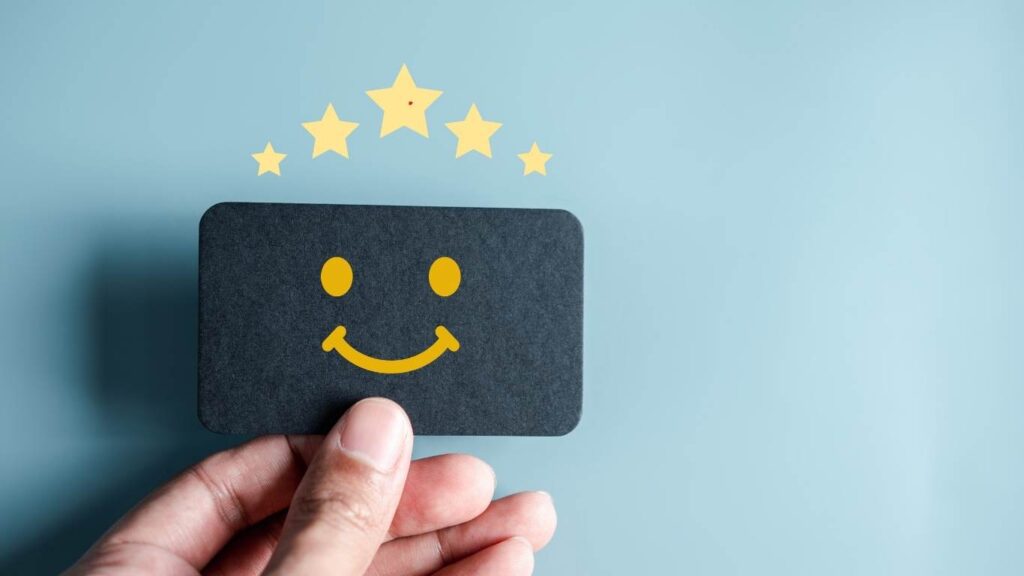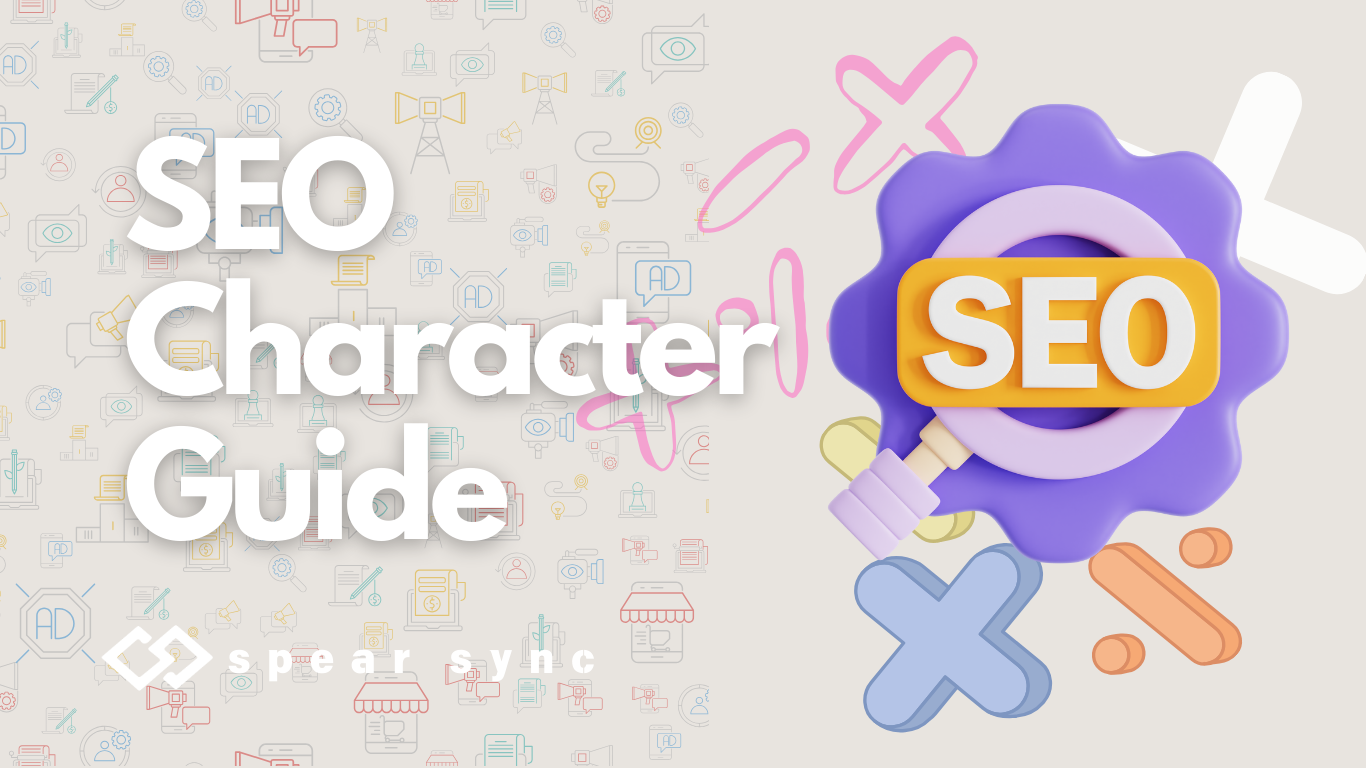Every type of customer loyalty and ways to build them
Even though the Apple iPhone has been almost identical for the last few years, there have been no big upgrades or differences. There will always be a group of people who will buy a brand new iPhone this year, even though they don’t have to upgrade their phone for performance issues. If you are one of those iPhone fans, then no offense; I am not mocking you. I am just helping you to understand how, over the years, Apple has built its loyal customer fan base.
In this article, we’ll try to understand every type of customer loyalty and how to build one.
1. Inertia Customer Loyalty:

This is the customer base that only buys from you just because it is convenient for them. Let me give you an example: there is a store only 10 feet away from your home. If you want to buy something like a drink or groceries for the house, then why would you go 10 miles away from your home and buy the same things that you would purchase from the store 10 feet away from you? It is hassle-free and convenient for you. You don’t have any emotional attachment to that store; if someone else opens another store 10 feet away from your house and offers the same product for a 10% discount, you would definitely buy from the next store for a lower price.
You could say the same for inertia customer loyalty. This is when customers keep buying from you simply because it’s the easiest option. They aren’t necessarily excited about your brand or emotionally attached—they just don’t see a reason to switch. Think of it as always ordering from the same restaurant because it’s convenient, not your favorite.
How to Build Real Customer Loyalty (the good kind):
- Be Consistent: Deliver excellent quality every single time. People like knowing they can rely on you.
- Build Trust: Be honest and transparent in how you run your business. Customers need to feel you care.
- Make Them Feel Valued: Personalize your communication—like sending a “Thank You” or special offers for loyal customers.
- Solve Problems Quickly: A quick and fair resolution to issues will earn you respect.
- Go Beyond Expectations: Add surprises or perks that make them feel special (like free upgrades or handwritten notes).
Risks with Inertia Loyalty:
- Easily Lost: They’ll jump ship without hesitation if something better or cheaper comes along.
- No Emotional Connection: They won’t defend your brand or promote you to others.
- Hard to Build Long-Term Growth: You’re not creating advocates who bring in new customers.
So, the goal is to move from inertia to absolute loyalty by focusing on emotional connections and value. It’s like turning a casual friend into a best friend—they stick with you because they
2. Transactional customer loyalty:
This is most likely the middle-class mothers we see in everyday life. The only thing they care about is the value of money products. They don’t care about you or your brand value; the only reason they would purchase from you, again and again, is because you give them the product with value that no ones give; the moment they find a better competitor who also provides the same product but with a lower price, they wouldn’t think twice to switch buying from you to them. If you target to generate more and more revenue, then you could target this kind of audience.
How to Build Transactional Loyalty the Right Way:
Offer Value: Create a reward program that is worth it—points, discounts, or freebies that equate to value for your audience.
Keep It Simple: Make earning and redeeming rewards as user-friendly as possible. Complicated systems turn people off.
Be Consistent: Always deliver on your promises. If you say, “spend $100, get $10 off,” don’t make them jump through hoops.
Combine Emotional Loyalty: While giving perks, also focus on connecting through good service or personalized experiences.
In the future, if you want to convert this transactional customer into a loyal customer, the trick is to use transactional loyalty as a stepping stone to creating a stronger emotional connection with your customers. That way, they’ll love your brand, not just your discounts.
3. Behavioral customer royalty:

Behavioral customer loyalty is all about what customers do rather than how they feel. It means they keep buying from you or using your service regularly, but it’s more about their habits than a deep connection to your brand. Maybe they choose you because you’re convenient, affordable, or just part of their routine.
How to Build Behavioral Loyalty the Right Way:
Be consistent: Ensure your product or service delivers exactly what customers expect every time. People will come back for reliability.
Reward Repetition: Implement rewards using loyalty cards, discounts for frequent purchases, or subscriptions.
Make It Convenient: Remove barriers—make your service easy to use and your products easy to buy.
The Risks of Behavioral Loyalty:
- Shallow Connection: They’re loyal to the convenience, not necessarily you. If someone else makes life easier or cheaper, they might switch.
- Complacency Risk: You might focus on habits and forget to create an emotional bond, which leaves you vulnerable to competitors.
To make it better? Combine behavioral loyalty with emotional loyalty. Get them hooked on the habit and make them feel good about choosing you. That’s a winning combo.
4. social customer royalty:

Social customer loyalty is when people stick with your brand because they feel connected to your community or values. It’s not just about your product—it’s about belonging to a group, supporting a cause, or feeling like they’re part of something bigger. Think about fans of brands like Patagonia or Apple—they love the brand and what it stands for.
How to Build Social Loyalty the Right Way:
Create Community: Create hubs where your customers can engage with each other, such as online forums, social media groups, or events. Make them feel like they are part of a tribe.
Stand for Something: Express your values and take a stand on issues that matter to your customers. Authenticity goes a long way in this regard.
Engage and Interact:
- Speak directly to your customers.
- Respond to comments.
- Share user-generated content.
- Make them feel noticed and heard.
Partner with Influencers: Collaborate with people who share your brand’s vibe to spread the word and build trust with audiences.
The Dangers of Social Loyalty:
Backlash: If your actions do not align with your values, customers will call you out. Authenticity is no longer a negotiation.
Exclusivity Problem: New customers might find joining hard if the community feels too closed off.
The key is to keep your values clear, stay genuine, and always nurture the sense of community. When done right, social loyalty is hard to beat!
5. Engagement customer royalty:

Engagement customer loyalty is about customers sticking with your brand because they genuinely enjoy interacting with you. It’s not just buying your product but the experience of social media, emails, events, or customer support. They feel involved and connected because you keep them interested and engaged.
How to Build Engagement Loyalty the Right Way:
You build this through meaningful, ongoing interactions with your customers. Think of it like a friendship: You can’t just talk to them when you need something. Keep the relationship alive with regular, fun, or helpful interactions.
For example, Post interesting, fun, or relatable content on social media so they look forward to hearing from you.
Run polls, contests, or Q&A sessions that make them feel heard and part of the conversation.
Share personalized messages or rewards that make them feel special. The Risks of Engagement Loyalty: The challenge with engagement loyalty is that it requires consistency and effort to keep people’s interests alive. This often wears off if you become inconsistent or your content gets boring. If the engagement seems forced or artificial, it may also break people’s trust in the brand.
So, to do it right, keep it accurate and consistent. Make them feel that they mean something to you, not just because of their wallets-as human beings.
6. Advocacy Loyalty royalty:
Advocacy loyalty is when your customers love your brand so much that they go out of their way to promote it to others. They recommend you to their friends, share your posts, and even defend your brand if someone criticizes it. They’re not just customers—they’re your biggest cheerleaders.
This kind of loyalty happens when people feel so good about their experience with your brand that they want others to feel the same way. Think of it like a friend who’s always telling you about a great new restaurant—they’re doing it because they’re genuinely excited, not because they’re getting anything in return.
How to Build Advocacy Loyalty
The secret to building advocacy loyalty is to create an experience so amazing that customers want to share it. Here’s how to do it:
- Deliver Wow Moments: Go above and beyond for your customers. Surprise them with exceptional service, unexpected freebies, or heartfelt gestures that make them feel special.
- Be Authentic and Transparent: People advocate for brands they trust. Be honest, even when things go wrong, and show your human side.
- Create Shareable Experiences: Make it easy for people to talk about you. Fun packaging, memorable events, or even a simple “tag us on Instagram” can get them excited to spread the word.
- Involve Your Customers: Ask for their feedback, feature them in your stories, or let them be part of your product development. When they feel included, they’ll naturally talk about you.
Keep It Real
To create true advocates, focus on building genuine connections. Show your customers that you care about them, not just their money, and they’ll do the talking for you. Advocacy loyalty isn’t just marketing—it’s the ultimate proof that your brand delivers something worth sharing.
7. Emotional customer royalty:

Emotional customer loyalty means people stick with your brand because they feel something. It’s not about your product; it’s about their connection with you. You could make them feel heard, inspired, or memorable because they can be a part of something bigger than themselves. If someone has emotional loyalty, they are no longer just a customer but a fan, and they will always go with you, even when your prices are higher, or someone else has something flashier on offer.
It’s that coffee shop where the barista knows your name or that brand that donates to a cause you care about. You aren’t just buying because you need something; you’re buying because it feels right.
How to Build It Right
You build emotional loyalty by making people feel your brand is special. Show them you care, and they’re not just another sale. Here’s how you can do it:
Be Authentic: People can tell when you’re just faking it. Stay true to your values, and don’t try to be something you’re not.
Understand Them: Get to know your customers. What do they care about? What are their struggles? Make them feel like you’re on their side.
Go Beyond Transactions: Show appreciation with a heartfelt “thank you,” a handwritten note, or a surprise discount. Small gestures make people feel valued.
Tell a Story: Allow them to relate to the story behind the brand you started and what you stand for. People love supporting brands that have a soul.
But when you get it right, customers won’t just stick with you; they’ll refer you to everyone they know. Emotional loyalty is powerful because it’s real.
conclusion: Building True Customer Loyaltyading
Customer loyalty isn’t one-size-fits-all; it’s like nurturing different relationships. Each type of loyalty has its role, and when used wisely, it can create a powerful bond between your business and your customers. Here’s how you bring it all together:
Behavioral and Transactional Loyalty: These are your cornerstones. Make it easy for customers to stick with you by being convenient, consistent, and rewarding. Loyalty cards, discounts, and subscriptions can incentivize repeat purchases and build habits around your brand. But remember, this is just the beginning- it’s not enough.
Build Emotional Loyalty to Differentiate: Habits and rewards may get them in the door, but emotional loyalty keeps them in it for the long haul. Show customers you care. Please share your story and support their values to make them feel like they’re a part of something meaningful. When they connect with you on a deeper level, they won’t just stay- they’ll become your advocates.
Use Social Loyalty to Strengthen Connections: Create a community around your brand where people feel they belong. This might be through social media, events, or shared values. People love being part of something greater than themselves, strengthening their bond to your business.
Engage, Always: Keep the conversation alive. Never sell; entertain, educate, and inspire instead. Make your customers feel their views count and their loyalty is valued. Engagement loyalty keeps your brand fresh and your relationships alive.
The Balance is Key
Diversify. Reliance on any one kind of loyalty is dangerous: transactional perks can be matched, and habits can be broken. But when combined thoughtfully, these types create a loyalty strategy that’s hard to shake. Reward their actions, engage their minds, and win their hearts.
Loyalty isn’t about trapping your customers; it’s about earning their trust and making them feel better about doing business with you. When you focus on their needs, not just your business goals, loyalty goes from synthetic to organic. And when you genuinely care, they will care back, fueling growth for your business in ways no marketing budget ever could.





